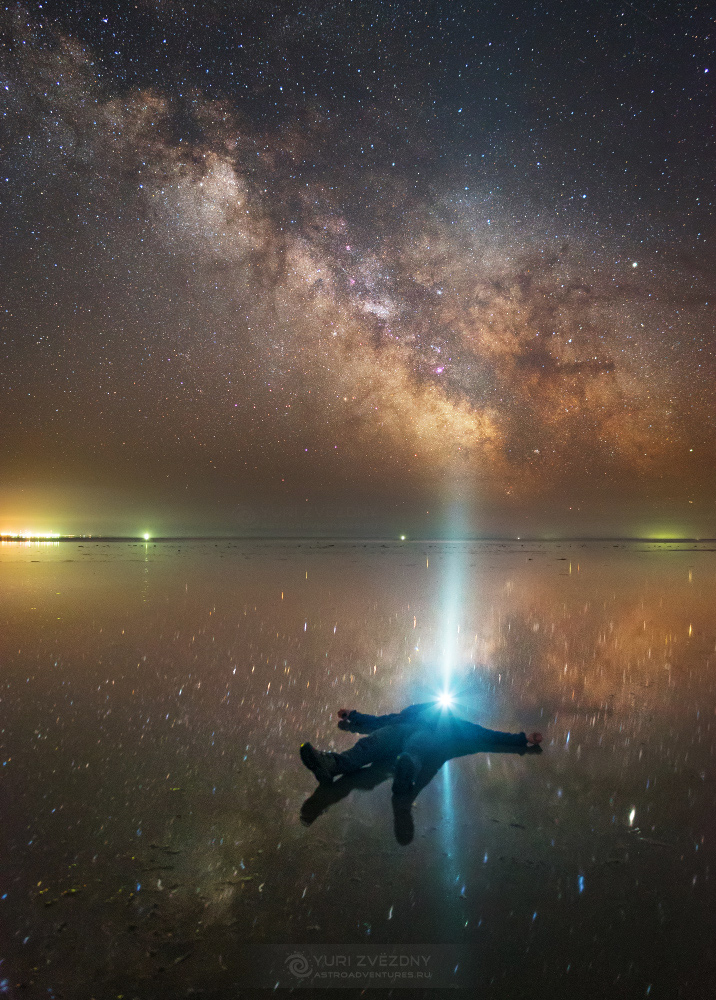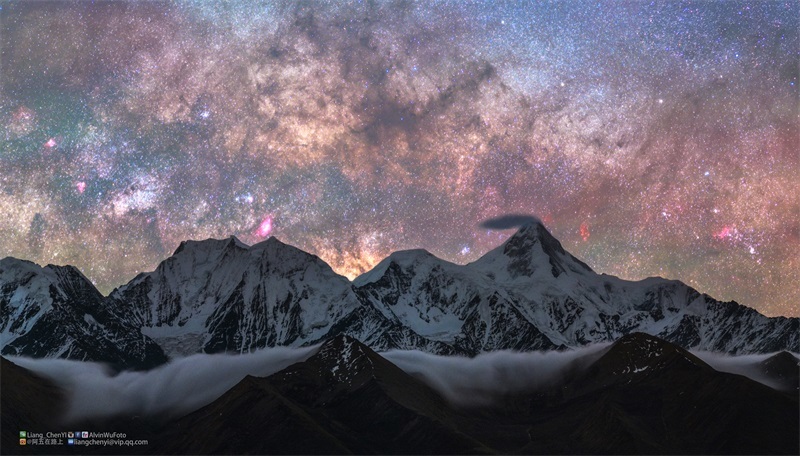Submissions: 2016 June
Submissions: 2016 June
__________________________________________________________________________________________________
Please post your images here.
Please see this thread before posting images; posting images demonstrates your agreement with
the possible uses for your image.
If hotlinking to an image, please ensure it is under 400K.
Hotlinks to images over 400K slow down the thread too much and will be disabled.
Thank you!
_________________________________________________________________________________________________
<- Previous submissions
[c]«« Discuss Anything in Astronomy «» Visit The Asterisk Main Page «» See Introductory Astonomy Lectures »»
«« Introduce Yourself «» Please Read the Rules »»[/c]
Please post your images here.
Please see this thread before posting images; posting images demonstrates your agreement with
the possible uses for your image.
If hotlinking to an image, please ensure it is under 400K.
Hotlinks to images over 400K slow down the thread too much and will be disabled.
Thank you!
_________________________________________________________________________________________________
<- Previous submissions
[c]«« Discuss Anything in Astronomy «» Visit The Asterisk Main Page «» See Introductory Astonomy Lectures »»
«« Introduce Yourself «» Please Read the Rules »»[/c]
Know the quiet place within your heart and touch the rainbow of possibility; be
alive to the gentle breeze of communication, and please stop being such a jerk. — Garrison Keillor
alive to the gentle breeze of communication, and please stop being such a jerk. — Garrison Keillor
-
aldomottino
- Ensign
- Posts: 75
- Joined: Fri Dec 23, 2011 11:08 pm
Unusual bright spot captured at sunset.
Hi all,
The first picture was taken from my backyard at sunset. I was surprised to see such bright spot in the dark clouds since the sun was already below the horizon (18:30 local time aprox). So I moved immediately to the second floor roof and got the second image, and soon after that a zoom image. Minutes later the bright spot just disappeared.
I don’t think it was a sun pillar because the temp wasn’t too low, and sun pillars actually don’t look like that. Probably it was just a very isolated and focused sun ray. What I still don’t understand is how such kind of ray was formed and where it reached the clouds from (below, above, laterally?).
Anyway, it was something rare and really interesting to see, at least for me!
Thanks for looking!
Aldo
The first picture was taken from my backyard at sunset. I was surprised to see such bright spot in the dark clouds since the sun was already below the horizon (18:30 local time aprox). So I moved immediately to the second floor roof and got the second image, and soon after that a zoom image. Minutes later the bright spot just disappeared.
I don’t think it was a sun pillar because the temp wasn’t too low, and sun pillars actually don’t look like that. Probably it was just a very isolated and focused sun ray. What I still don’t understand is how such kind of ray was formed and where it reached the clouds from (below, above, laterally?).
Anyway, it was something rare and really interesting to see, at least for me!
Thanks for looking!
Aldo
Re: Submissions: 2016 June
The Milky Way by summer solstice night
Copyright: Petr Horálek
June is very interesting month of the year for northern countries around the world. While season of visibility of the Noctilucent clouds is ongoing, the night sky is, actually, not dark. Due to location of for example my country, which is on 50N of latitude, the season around summer solstice gives very short nights, which are by definition not astronomical at all. The Sun is not lower than 18 degrees below the horizon and this situation usually takes from 31st May to 11th July. The most noticeable not-dark nights are around the solstice itself. This year the summer solstice occurs on 20th June when also the Full Moon will illuminate the night. So to feel non-astronomical night with the Milky Way in dark-bluish skies is the best right now or in the beginning of July. Looking north, you can even notice „swimming twilight", slowly moving from after dusk from north-west to north-east to the dawn. People located even more north, closer to the pole (north US, Canada, Alaska, Scandinavia…) can notice the all-night dusk to white night. From about 67N to the north the Sun doesn’t set around the solstice time at all. This image was taken on 22nd June 2015 over Seč reservoir of the Czech Republic by an hour before the local midnight.
More and the image in higher resolution: http://www.astronom.cz/horalek/?p=2431
Copyright: Petr Horálek
June is very interesting month of the year for northern countries around the world. While season of visibility of the Noctilucent clouds is ongoing, the night sky is, actually, not dark. Due to location of for example my country, which is on 50N of latitude, the season around summer solstice gives very short nights, which are by definition not astronomical at all. The Sun is not lower than 18 degrees below the horizon and this situation usually takes from 31st May to 11th July. The most noticeable not-dark nights are around the solstice itself. This year the summer solstice occurs on 20th June when also the Full Moon will illuminate the night. So to feel non-astronomical night with the Milky Way in dark-bluish skies is the best right now or in the beginning of July. Looking north, you can even notice „swimming twilight", slowly moving from after dusk from north-west to north-east to the dawn. People located even more north, closer to the pole (north US, Canada, Alaska, Scandinavia…) can notice the all-night dusk to white night. From about 67N to the north the Sun doesn’t set around the solstice time at all. This image was taken on 22nd June 2015 over Seč reservoir of the Czech Republic by an hour before the local midnight.
More and the image in higher resolution: http://www.astronom.cz/horalek/?p=2431
Re: Submissions: 2016 June
Prominent after-aurorae airglow by solstice night
Copyright: Petr Horálek
On 23rd June 2015 the solar activity woke up one of the strongest northern lights of 2015, visible even from the Czech Republic. Unfortunately, it was hopelessly overcast. But the very next night, the sky cleared up and despite the rapidly decreasing auroral activity the sky somehow got green tint anyway. It was visible faintly by naked eyes. The ghostly shaped green bands, like brush strokes, appeared somewhere from the east. I knew that I was witness of very special green airglow. Emitted most likely by atoms of oxygen in about 100 km above ground, this natural atmospheric glow was caused by the extreme UV radiation from the Sun in the day, which was followed by this photogenic chemiluminescence in the atmosphere. I didn’t hesitate even a minute, took my camera and went on a beautiful beach of Seč reservoir, with clear view to the direction of east. The light pollution of far cities disturbed this magnificent phenomenon, but not much. Although, not only cities and the airglow caused that the sky was brighter than usually – it was just two days after the summer solstice, meaning no astronomical night from the Czech Republic. So the sky was, actually, deep blue. Staring at the Milky Way, Andromeda galaxy and „fingers“ of airglow on the beach with calm summer lake nearby the local yacht-club, that was one of the most magical moment of 2015.
More and the image in higher resolution: http://www.astronom.cz/horalek/?p=2221
Copyright: Petr Horálek
On 23rd June 2015 the solar activity woke up one of the strongest northern lights of 2015, visible even from the Czech Republic. Unfortunately, it was hopelessly overcast. But the very next night, the sky cleared up and despite the rapidly decreasing auroral activity the sky somehow got green tint anyway. It was visible faintly by naked eyes. The ghostly shaped green bands, like brush strokes, appeared somewhere from the east. I knew that I was witness of very special green airglow. Emitted most likely by atoms of oxygen in about 100 km above ground, this natural atmospheric glow was caused by the extreme UV radiation from the Sun in the day, which was followed by this photogenic chemiluminescence in the atmosphere. I didn’t hesitate even a minute, took my camera and went on a beautiful beach of Seč reservoir, with clear view to the direction of east. The light pollution of far cities disturbed this magnificent phenomenon, but not much. Although, not only cities and the airglow caused that the sky was brighter than usually – it was just two days after the summer solstice, meaning no astronomical night from the Czech Republic. So the sky was, actually, deep blue. Staring at the Milky Way, Andromeda galaxy and „fingers“ of airglow on the beach with calm summer lake nearby the local yacht-club, that was one of the most magical moment of 2015.
More and the image in higher resolution: http://www.astronom.cz/horalek/?p=2221
Last edited by Petr H. on Fri Jun 03, 2016 7:56 pm, edited 1 time in total.
Re: Submissions: 2016 June
Pilgrims of Mars
Copyright: Petr Horálek
The Atacama Desert of Chile is sometimes called „the Mars landscape on Earth“. And this image can pretty much show why. When Babak Tafreshi (left) and me arrived on 4th April 2016 in the deep desert, I just went outside of the car and couldn’t breath for a while. I was so thrilled of the view around, slightly illuminated by morning crescent Moon, that I only stood close to the car and enjoyed the magic of this wonderful wasteland. And up above us all the Universe was almost literally on touch. By the way, the real Mars is the brightest orange star close to the center of the image, only a month and half before its great opposition of 2016.
More and the image in higher resolution: http://www.astronom.cz/horalek/?p=2425
Copyright: Petr Horálek
The Atacama Desert of Chile is sometimes called „the Mars landscape on Earth“. And this image can pretty much show why. When Babak Tafreshi (left) and me arrived on 4th April 2016 in the deep desert, I just went outside of the car and couldn’t breath for a while. I was so thrilled of the view around, slightly illuminated by morning crescent Moon, that I only stood close to the car and enjoyed the magic of this wonderful wasteland. And up above us all the Universe was almost literally on touch. By the way, the real Mars is the brightest orange star close to the center of the image, only a month and half before its great opposition of 2016.
More and the image in higher resolution: http://www.astronom.cz/horalek/?p=2425
Re: Submissions: 2016 June
By the young Moon
Copyright: Petr Horálek
During stay in Chile to see the beauties of the Chilean desert itself, I spent a while close to the Miniques and Miscanti lagunas on 10th April 2016. The weather was not perfect and the young crescent Moon illuminated the night scape, so I used the moment to capture at least this view. The distant peak is volcano Miñiques, gently quarding the two bright stars above – Alpha Centauri (yellowish) and Hadar (bluish one). Pink-colored Carina nebula and two Magellanic clouds reminded me that I was watching the treasures of the southern sky in the moment.
More and the image in higher resolution: http://www.astronom.cz/horalek/?p=2407
Copyright: Petr Horálek
During stay in Chile to see the beauties of the Chilean desert itself, I spent a while close to the Miniques and Miscanti lagunas on 10th April 2016. The weather was not perfect and the young crescent Moon illuminated the night scape, so I used the moment to capture at least this view. The distant peak is volcano Miñiques, gently quarding the two bright stars above – Alpha Centauri (yellowish) and Hadar (bluish one). Pink-colored Carina nebula and two Magellanic clouds reminded me that I was watching the treasures of the southern sky in the moment.
More and the image in higher resolution: http://www.astronom.cz/horalek/?p=2407
Re: Submissions: 2016 June
Stargazing on the largest meteorite
Copyright: Petr Horálek
In the Namibian northern region Onjozondjupa, there is so much to see. But probably the most tempting is the largest found iron meteorite in the world. The Hoba West meteorite, as it’s named after the close farm, is one of the most astronomical sightseeing in Namibia and logically belongs to the national natural heritage. The stone from the inner Solar system fell on the African ground about 80 thousand years ago. However, the discovery came in 1920, when the owner of the land, Jacobus Hermanus Brits, encountered the object while ploughing one of his fields with an ox. During this task, he heard a loud metallic scratching sound and the plough came to an abrupt halt. First estimates talked about 85 tons of its weight, but due to many factors (including human intervention) cause the current weight is much lesser, about 60 tons. As the meteorite is flat (2.7×2.7×0.9 meters big) and composed of about 84% iron and 16% nickel, people love to stand on its surface. Actually, it’s great experience, because if you stay on it in the middle of the small amphitheater, you can hear sound echoes of your voice. But probably the most amazing moment is in a time of standing on this cosmic intruder on the ground, and gazing the stars up above. You can literally feel how the civilization is fragile and, by breathing the air around, you thank to the nature for giving us the atmosphere, the protective shield against many other stones from the Earth’s surrounding.
More and the image in higher resolution: http://www.astronom.cz/horalek/?p=2063
Copyright: Petr Horálek
In the Namibian northern region Onjozondjupa, there is so much to see. But probably the most tempting is the largest found iron meteorite in the world. The Hoba West meteorite, as it’s named after the close farm, is one of the most astronomical sightseeing in Namibia and logically belongs to the national natural heritage. The stone from the inner Solar system fell on the African ground about 80 thousand years ago. However, the discovery came in 1920, when the owner of the land, Jacobus Hermanus Brits, encountered the object while ploughing one of his fields with an ox. During this task, he heard a loud metallic scratching sound and the plough came to an abrupt halt. First estimates talked about 85 tons of its weight, but due to many factors (including human intervention) cause the current weight is much lesser, about 60 tons. As the meteorite is flat (2.7×2.7×0.9 meters big) and composed of about 84% iron and 16% nickel, people love to stand on its surface. Actually, it’s great experience, because if you stay on it in the middle of the small amphitheater, you can hear sound echoes of your voice. But probably the most amazing moment is in a time of standing on this cosmic intruder on the ground, and gazing the stars up above. You can literally feel how the civilization is fragile and, by breathing the air around, you thank to the nature for giving us the atmosphere, the protective shield against many other stones from the Earth’s surrounding.
More and the image in higher resolution: http://www.astronom.cz/horalek/?p=2063
Re: Submissions: 2016 June
Temperament Halmahera night
Copyright: Petr Horálek
Storms are one of the most amazing phenomena on Earth. While staying on wonderful Halmahera island for the spectacular total solar eclipse, I had incredible view from Kartika Buli over the distant tropical horizon on 2nd March 2016. Wild storm was producing beautiful flashes and the starry sky above was completely clear. This is the view when Orion the hunter was slowly diving in the storm. By watching this storm, me and my friends enjoyed the temperament of the not well known but so great place of the North Maluku.
More and the image in higher resolution: http://www.astronom.cz/horalek/?p=2383
Copyright: Petr Horálek
Storms are one of the most amazing phenomena on Earth. While staying on wonderful Halmahera island for the spectacular total solar eclipse, I had incredible view from Kartika Buli over the distant tropical horizon on 2nd March 2016. Wild storm was producing beautiful flashes and the starry sky above was completely clear. This is the view when Orion the hunter was slowly diving in the storm. By watching this storm, me and my friends enjoyed the temperament of the not well known but so great place of the North Maluku.
More and the image in higher resolution: http://www.astronom.cz/horalek/?p=2383
Re: Submissions: 2016 June
Horsehead nebula in narrow band (Red = Ha, Green = SII, Blue = OIII)
1.5 hours of data taken with iTelescope T14
Copyright Darryn Lavery
1.5 hours of data taken with iTelescope T14
Copyright Darryn Lavery
- geckzilla
- Ocular Digitator
- Posts: 9180
- Joined: Wed Sep 12, 2007 12:42 pm
- Location: Modesto, CA
- Contact:
Re: Unusual bright spot captured at sunset.
It looks like a sun pillar to me.aldomottino wrote:Hi all,
The first picture was taken from my backyard at sunset. I was surprised to see such bright spot in the dark clouds since the sun was already below the horizon (18:30 local time aprox). So I moved immediately to the second floor roof and got the second image, and soon after that a zoom image. Minutes later the bright spot just disappeared.
I don’t think it was a sun pillar because the temp wasn’t too low, and sun pillars actually don’t look like that. Probably it was just a very isolated and focused sun ray. What I still don’t understand is how such kind of ray was formed and where it reached the clouds from (below, above, laterally?).
Anyway, it was something rare and really interesting to see, at least for me!
Thanks for looking!
Aldo
Just call me "geck" because "zilla" is like a last name.
-
PatrickWinkler
- Ensign
- Posts: 74
- Joined: Wed May 25, 2016 4:24 pm
- Location: Traiskirchen (Austria)
- Contact:
Re: Submissions: 2016 June
NGC 6723
LRGB 30 35 35 35
Canon EF 70-200 f/2.8 L IS II USM
FLI ML x694
https://astropictures.smugmug.com/Nebulas/i-T28zjtX/A
Patrick Winkler
LRGB 30 35 35 35
Canon EF 70-200 f/2.8 L IS II USM
FLI ML x694
https://astropictures.smugmug.com/Nebulas/i-T28zjtX/A
Patrick Winkler
Re: Submissions: 2016 June
Omega Centauri: The Brightest Globular Cluster in the Milky Way
Omega Centauri, or NGC 5139, is a large globular cluster located within the constellation of Centaurus. This object was first identified as a non-stellar object by Edmond Halley in 1677. It is the largest globular cluster in our galaxy, and is located roughly 15,800 light years away, with a diameter 150 light-years. It is an incredibly bright object, containing approximately 10 million stars which allow it to be seen visually without optical aid.
With an apparent magnitude of 3.9, it can be imaged from under light polluted skies. This image was taken from the suburbs of Melbourne Australia, under 80-70 percent full moon. The instruments used were a 10 inch RCOS, SBIG STL-11000, on an Astro-Physics Mount.
Imaging dates: 24-29 of June 2016
Calibration Software: CCDStack
Processing Software: Photoshop 6
Filters Used: Astrodon LRGB
Terry Robison
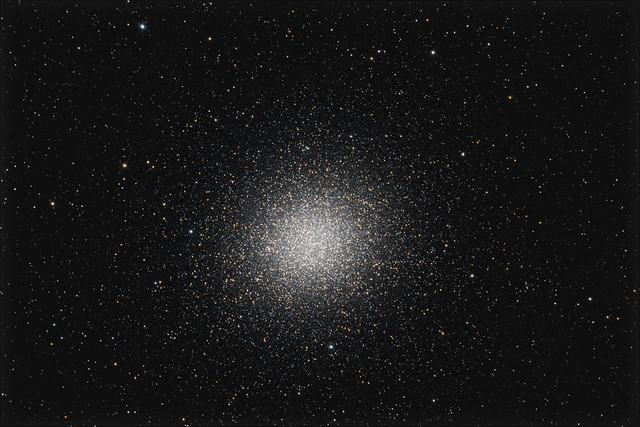
Omega Centauri by Terry Robison, on Flickr
Omega Centauri, or NGC 5139, is a large globular cluster located within the constellation of Centaurus. This object was first identified as a non-stellar object by Edmond Halley in 1677. It is the largest globular cluster in our galaxy, and is located roughly 15,800 light years away, with a diameter 150 light-years. It is an incredibly bright object, containing approximately 10 million stars which allow it to be seen visually without optical aid.
With an apparent magnitude of 3.9, it can be imaged from under light polluted skies. This image was taken from the suburbs of Melbourne Australia, under 80-70 percent full moon. The instruments used were a 10 inch RCOS, SBIG STL-11000, on an Astro-Physics Mount.
Imaging dates: 24-29 of June 2016
Calibration Software: CCDStack
Processing Software: Photoshop 6
Filters Used: Astrodon LRGB
Terry Robison

Omega Centauri by Terry Robison, on Flickr
Collecting Photons.....
Images Gallery
https://www.astrobin.com/users/trobison/
https://www.flickr.com/photos/97807083@ ... 6565068452
Images Gallery
https://www.astrobin.com/users/trobison/
https://www.flickr.com/photos/97807083@ ... 6565068452
Re: Submissions: 2015 July
Re: Submissions: 2015 July
Re: Submissions: 2015 July
-
Efrain Morales
- Science Officer
- Posts: 492
- Joined: Fri Oct 22, 2010 8:15 pm
- AKA: Jaicoa
- Location: Aguadilla, Puerto Rico
- Contact:
Saturn Twelve years angle evolution
Twelve years of Oppositions 2005 - 2016, Ring angle tilt evolution. ( Center, Top left to lower right ). ( Equipments: LX200ACF 12 in., 10in, OTA, CGE mount, Flea3, DMK21, TouCam 740,840, SAC7 Ccd's, TeleVue 3x barlows, PowerMate 2.5x barlows.)
Re: Submissions: 2016 June
The night sky of MT.Konka which the second highest snow-capped mountains of china
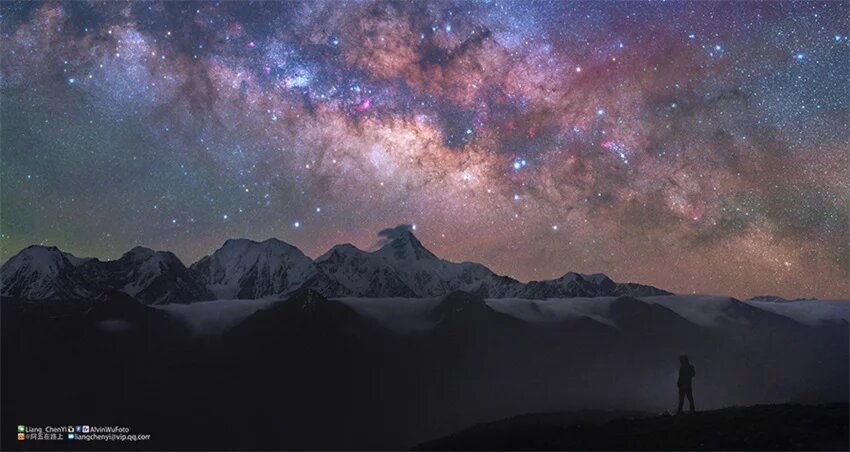
Email:liangchenyi@vip.qq.com

Email:liangchenyi@vip.qq.com
- AlexMaragos
- Ensign
- Posts: 83
- Joined: Tue Jan 04, 2011 4:02 pm
- AKA: Alexandros Maragos
- Location: In transit
- Contact:
Re: Submissions: 2016 June
The Milky Way over Peloponnese.
Mars (right), Saturn (center-right), Pluto (center-left) and the Milky Way over the Peloponnese peninsula in southern Greece.
The distant orange glow on the left emanate from the city lights of Corinth & Athens some 300km away from where i took the shot last night.
http://www.alexandrosmaragos.com
Copyright: Alexandros Maragos
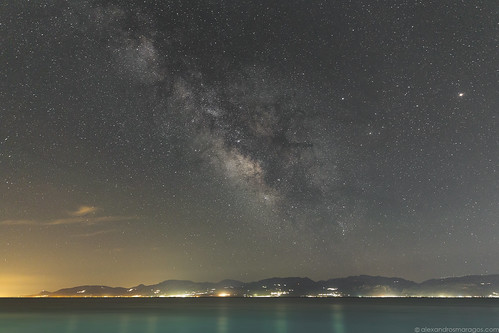
The Milky Way over Peloponnese by Alexandros Maragos, on Flickr
Mars (right), Saturn (center-right), Pluto (center-left) and the Milky Way over the Peloponnese peninsula in southern Greece.
The distant orange glow on the left emanate from the city lights of Corinth & Athens some 300km away from where i took the shot last night.
http://www.alexandrosmaragos.com
Copyright: Alexandros Maragos

The Milky Way over Peloponnese by Alexandros Maragos, on Flickr
Re: Submissions: 2016 June
Look up and Get Lost
Milkyway rising at the hot water beach, New Zealand.
Milkyway rising at the hot water beach, New Zealand.
Exploring Night Sky (Amit Ashok Kamble)
website: http://exploringnightsky.com
Facebook: http://facebook.com/exploringnightsky
Instagram: http://instagram.com/exploringnightsky
website: http://exploringnightsky.com
Facebook: http://facebook.com/exploringnightsky
Instagram: http://instagram.com/exploringnightsky
-
kenpendlebury
- Asternaut
- Posts: 3
- Joined: Fri Oct 08, 2010 5:10 pm
Re: Submissions: 2016 June
Two Panel Mosaic - Heart and Soul
Larger version here: http://www.astrobin.com/full/250912/B/
Copyright: Ken Pendlebury
Two panel mosaic of the heart and soul. Data captured in 2015, processed in June 2016.
Larger version here: http://www.astrobin.com/full/250912/B/
Copyright: Ken Pendlebury
Two panel mosaic of the heart and soul. Data captured in 2015, processed in June 2016.
-
Bi2L
- Science Officer
- Posts: 103
- Joined: Tue Jul 19, 2011 11:24 am
- AKA: Bill Metallinos
- Location: Corfu, Greece
- Contact:
Re: Submissions: 2016 June
Eternal Delusion, Porto Timone, Corfu
Night landscape above Porto Timone, a twin sandy beach at Afionas village, Corfu. With the Milky Way shines in the firmament!
The Milky Way is the galaxy that contains our Solar System. Its name "milky" is derived from its appearance as a dim glowing band arching across the night sky whose individual stars cannot be distinguished by the naked eye. The term "Milky Way" is a translation of the Latin via lactea, from the Greek γαλαξίας κύκλος (galaxías kýklos, "milky circle"). From Earth, the Milky Way appears as a band because its disk-shaped structure is viewed from within. Galileo Galilei first resolved the band of light into individual stars with his telescope in 1610. Until the early 1920s, most astronomers thought that the Milky Way contained all the stars in the Universe. Following the 1920 Great Debate between the astronomers Harlow Shapley and Heber Curtis, observations by Edwin Hubble showed that the Milky Way is just one of many galaxies—now estimated to number as many as 200 billion galaxies in the observable universe.
The Milky Way is a barred spiral galaxy that has a diameter usually considered to be about 100,000–120,000 light-years but may be 150,000–180,000 light-years. The Milky Way is estimated to contain 100–400 billion stars, although this number may be as high as one trillion. There are likely at least 100 billion planets in the Milky Way. The Solar System is located within the disk, about 27,000 light-years from the Galactic Center, on the inner edge of one of the spiral-shaped concentrations of gas and dust called the Orion Arm. The stars in the inner ≈10,000 light-years form a bulge and one or more bars that radiate from the bulge. The very center is marked by an intense radio source, named Sagittarius A*, which is likely to be a supermassive black hole.
Stars and gases at a wide range of distances from the Galactic Center orbit at approximately 220 kilometers per second. The constant rotation speed contradicts the laws of Keplerian dynamics and suggests that much of the mass of the Milky Way does not emit or absorb electromagnetic radiation. This mass has been termed "dark matter". The rotational period is about 240 million years at the position of the Sun. The Milky Way as a whole is moving at a velocity of approximately 600 km per second with respect to extragalactic frames of reference. The oldest stars in the Milky Way are nearly as old as the Universe itself and thus likely formed shortly after the Dark Ages of the Big Bang.
The Milky Way has several satellite galaxies and is part of the Local Group of galaxies, which is a component of the Virgo Supercluster, which is itself a component of the Laniakea Supercluster.
text Wikipedia, more here https://en.wikipedia.org/wiki/Milky_Way
Canon eos 5D mk2, Ef 15mm fisheye, f/2.8, Iso1250, 5X60sec, DSS. 05/06/16
Night landscape above Porto Timone, a twin sandy beach at Afionas village, Corfu. With the Milky Way shines in the firmament!
The Milky Way is the galaxy that contains our Solar System. Its name "milky" is derived from its appearance as a dim glowing band arching across the night sky whose individual stars cannot be distinguished by the naked eye. The term "Milky Way" is a translation of the Latin via lactea, from the Greek γαλαξίας κύκλος (galaxías kýklos, "milky circle"). From Earth, the Milky Way appears as a band because its disk-shaped structure is viewed from within. Galileo Galilei first resolved the band of light into individual stars with his telescope in 1610. Until the early 1920s, most astronomers thought that the Milky Way contained all the stars in the Universe. Following the 1920 Great Debate between the astronomers Harlow Shapley and Heber Curtis, observations by Edwin Hubble showed that the Milky Way is just one of many galaxies—now estimated to number as many as 200 billion galaxies in the observable universe.
The Milky Way is a barred spiral galaxy that has a diameter usually considered to be about 100,000–120,000 light-years but may be 150,000–180,000 light-years. The Milky Way is estimated to contain 100–400 billion stars, although this number may be as high as one trillion. There are likely at least 100 billion planets in the Milky Way. The Solar System is located within the disk, about 27,000 light-years from the Galactic Center, on the inner edge of one of the spiral-shaped concentrations of gas and dust called the Orion Arm. The stars in the inner ≈10,000 light-years form a bulge and one or more bars that radiate from the bulge. The very center is marked by an intense radio source, named Sagittarius A*, which is likely to be a supermassive black hole.
Stars and gases at a wide range of distances from the Galactic Center orbit at approximately 220 kilometers per second. The constant rotation speed contradicts the laws of Keplerian dynamics and suggests that much of the mass of the Milky Way does not emit or absorb electromagnetic radiation. This mass has been termed "dark matter". The rotational period is about 240 million years at the position of the Sun. The Milky Way as a whole is moving at a velocity of approximately 600 km per second with respect to extragalactic frames of reference. The oldest stars in the Milky Way are nearly as old as the Universe itself and thus likely formed shortly after the Dark Ages of the Big Bang.
The Milky Way has several satellite galaxies and is part of the Local Group of galaxies, which is a component of the Virgo Supercluster, which is itself a component of the Laniakea Supercluster.
text Wikipedia, more here https://en.wikipedia.org/wiki/Milky_Way
Canon eos 5D mk2, Ef 15mm fisheye, f/2.8, Iso1250, 5X60sec, DSS. 05/06/16
-
ihorkhomych
- Asternaut
- Posts: 6
- Joined: Sun May 15, 2016 10:59 am
Re: Submissions: 2016 June
Mars, Jupiter and bright star Arcturus
Presently, when the new moon, Mars (left) and Jupiter (right) becames a brightest objects in the night sky.
This planets have a similar magnitude and form an interesting triangle with the star Arcturus (top).
Zolochiv, Ukraine. June 5, 2016
Copyright: Ihor Khomych
https://www.facebook.com/ihor.khomych
Presently, when the new moon, Mars (left) and Jupiter (right) becames a brightest objects in the night sky.
This planets have a similar magnitude and form an interesting triangle with the star Arcturus (top).
Zolochiv, Ukraine. June 5, 2016
Copyright: Ihor Khomych
https://www.facebook.com/ihor.khomych







